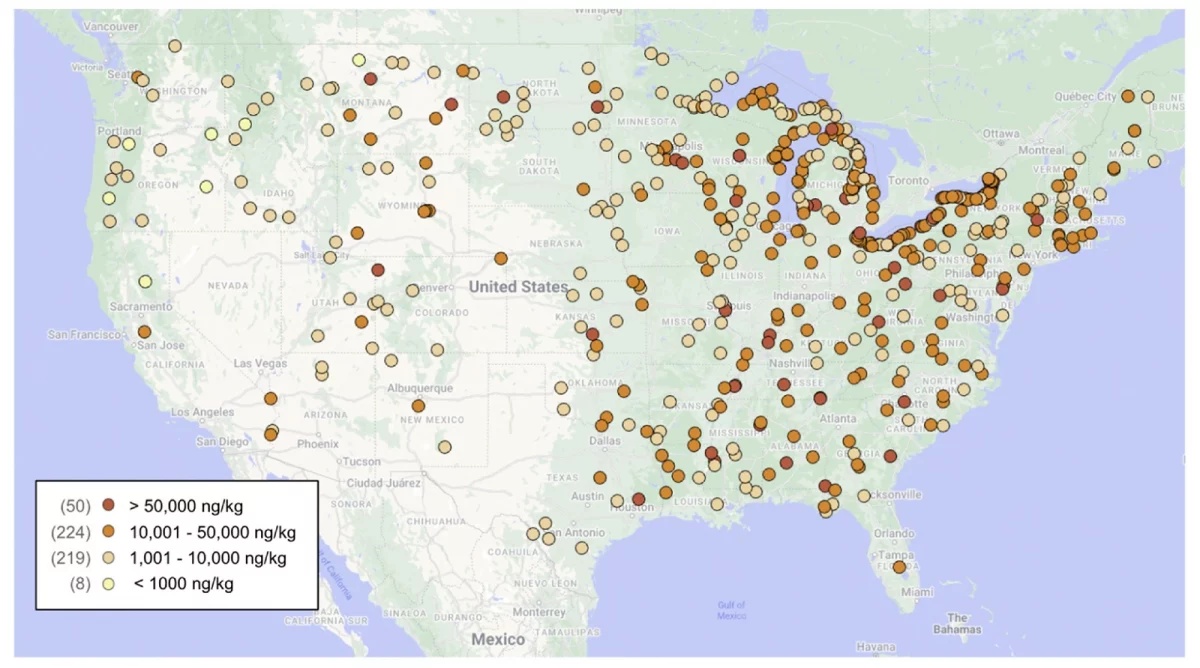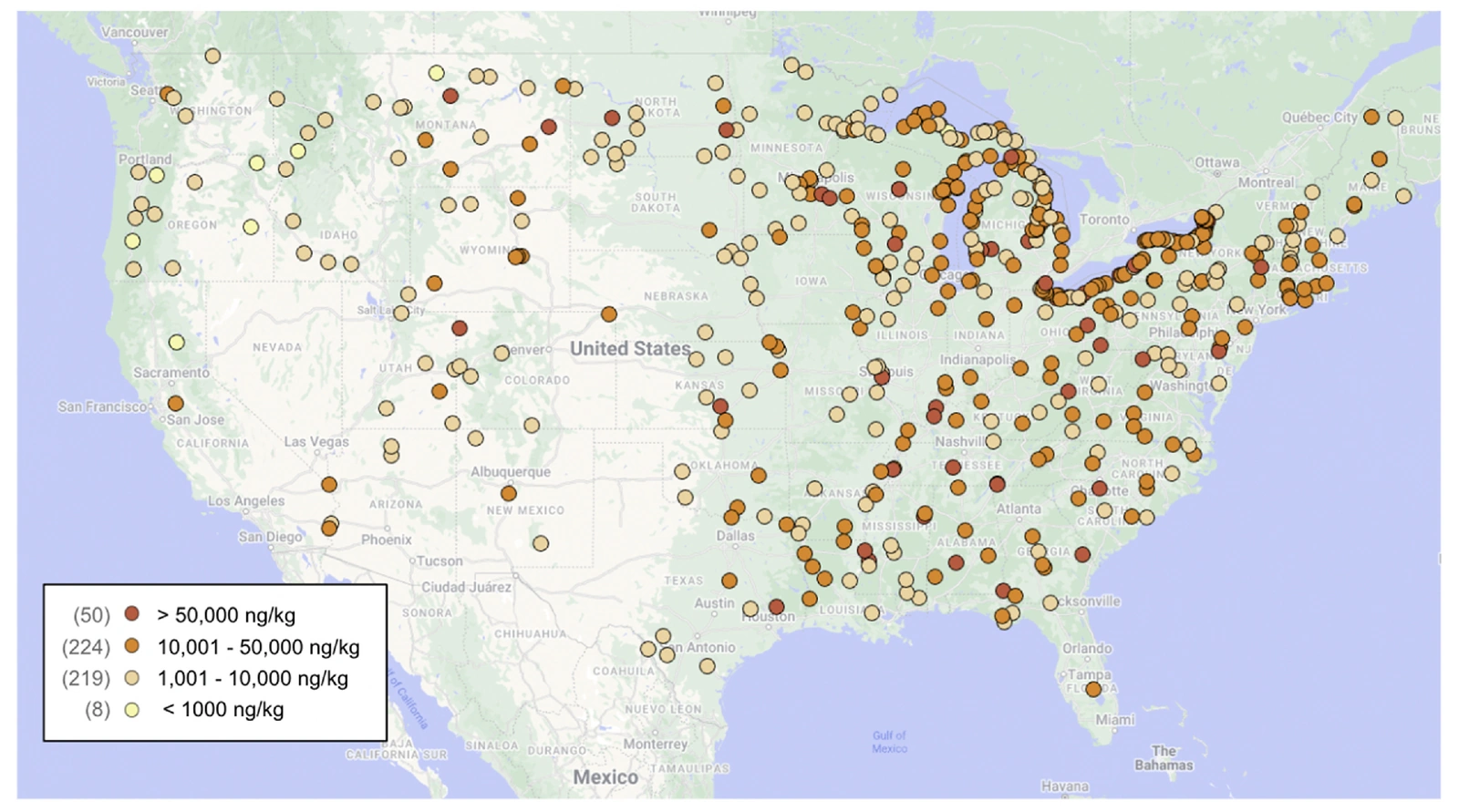The currently named culprit is Scotchgard; it’s the commercial name for a stain-resistant chemical known as perfluorooctane sulfonic acid, or PFOS for short. It’s part of a larger group of chemicals called PFAS, and the problem is these chemicals persist in the environment for a long time.
Scotchgard hasn’t been manufactured in the U.S. for more than 20 years, but it’s showing up recently in fresh-water fish filets sampled from taken from all 48 states in the lower U.S. And the real problem is this: fish are an efficient delivery method. In other words, the chemicals concentrate in their tissue at concerning levels.
This story was sourced from the MPR article linked below, but if you’d like to dive into the scientific study it was based on, you can find it here.
Cover Image: Sourced from the study in Environmental Research linked here.Total quantifiable PFAS in freshwater fish in the continental United States (2013–2015). Dots depict sample locations from the National Rivers and Streams Assessment and the Great Lakes Human Health Fish Fillet Tissue Study. The dots are divided into four color-coded groups based on the composite sample’s concentration of total PFAS. There are 349 sampling locations from the National Rivers and Streams Assessment and 152 sampling locations from the Great Lakes Human Health Fish Fillet Tissue Study, for a total of 501 sampling locations. (For interpretation of the references to color in this figure legend, the reader is referred to the Web version of this article.)





